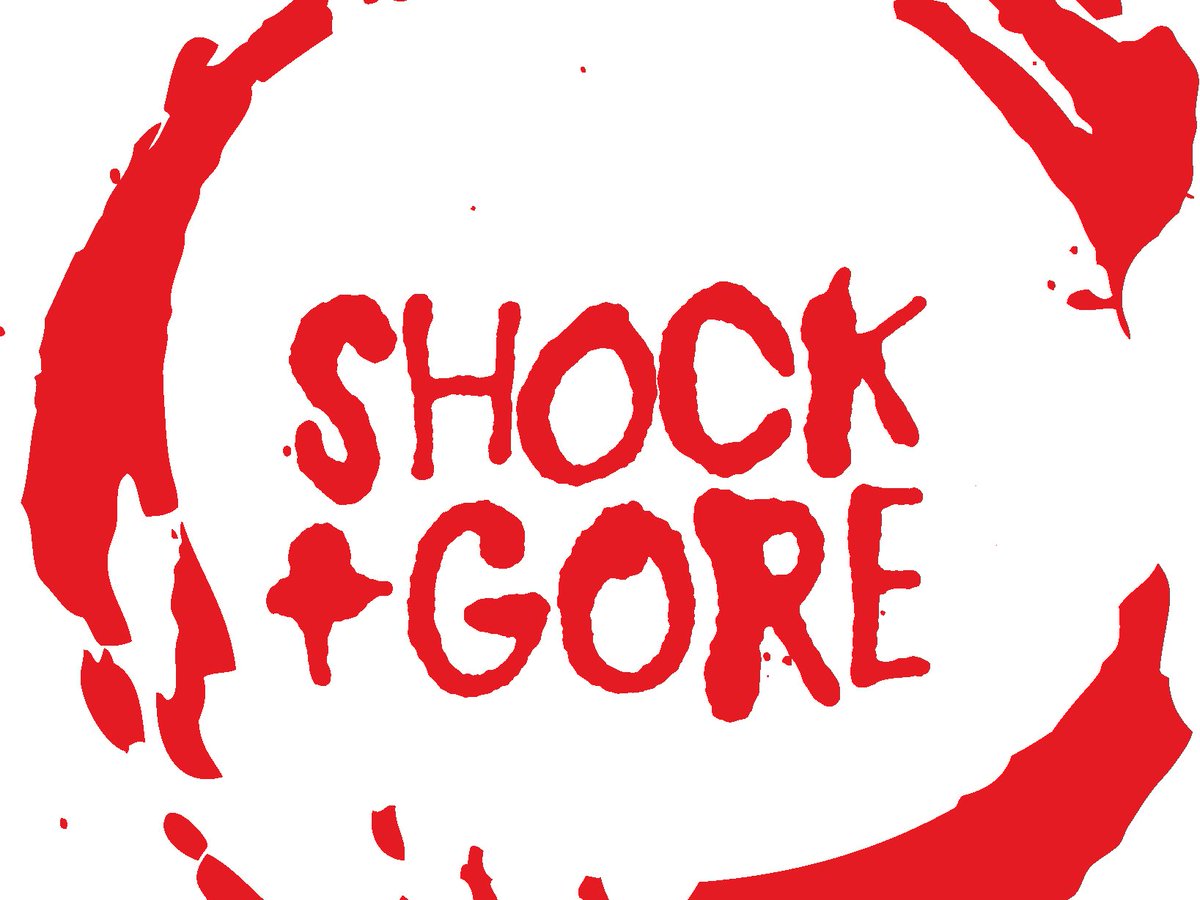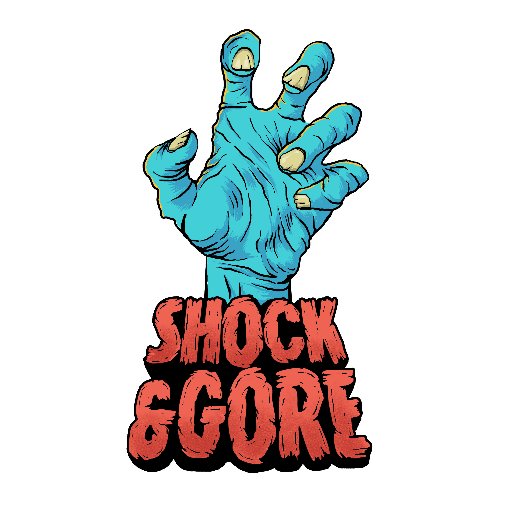Gore Shock Site: Exploring The Controversial Phenomenon
When it comes to internet culture, few topics are as polarizing as gore shock sites. These platforms, which showcase graphic content, have sparked intense debates about freedom of expression, ethical boundaries, and the impact on mental health. Whether you're curious about what these sites entail or concerned about their implications, understanding the phenomenon is crucial in today's digital age.
Gore shock sites have been around for decades, evolving alongside the internet itself. These websites, which often feature disturbing images and videos, cater to a niche audience seeking extreme content. However, their existence raises important questions about the responsibility of content creators and the potential harm to viewers.
In this article, we'll delve into the world of gore shock sites, exploring their history, impact, and the ethical dilemmas they present. By the end, you'll have a comprehensive understanding of this controversial phenomenon and its implications for society.
Read also:Toronto Maple Leafs Triumph Over Colorado Avalanche In Exciting Nhl Showdown
Table of Contents
- The History of Gore Shock Sites
- Types of Content on Gore Shock Sites
- Psychological Impact of Viewing Graphic Content
- Legal Issues Surrounding Gore Shock Sites
- Ethical Concerns and Debates
- Famous Examples of Gore Shock Sites
- Understanding the Target Audience
- Mental Health Implications
- Prevention and Awareness Strategies
- The Future of Gore Shock Sites
The History of Gore Shock Sites
Gore shock sites emerged in the early days of the internet, coinciding with the rise of user-generated content platforms. The first notable example, Rotten.com, launched in the late 1990s and quickly gained notoriety for its explicit and graphic content. This website set the stage for a new genre of online platforms that pushed the boundaries of what was considered acceptable content.
Over the years, these sites have evolved, adapting to technological advancements and changing societal norms. The proliferation of smartphones and social media has further amplified the reach of such content, making it more accessible than ever before. However, this increased accessibility has also raised concerns about the potential harm it may cause.
Early Influences and Inspirations
The origins of gore shock sites can be traced back to underground subcultures that celebrated the macabre. Early influences included horror films, true crime documentaries, and medical textbooks. These sources provided the foundation for the type of content that would eventually populate shock sites.
- Horror films: Movies like "The Texas Chain Saw Massacre" and "The Exorcist" inspired a fascination with extreme violence and supernatural phenomena.
- True crime: The popularity of true crime stories and documentaries fueled interest in real-life crime scenes and forensic investigations.
- Medical textbooks: Graphic images from medical textbooks were often repurposed for shock value on these platforms.
Types of Content on Gore Shock Sites
Gore shock sites are known for their diverse range of graphic content. While some focus on specific themes, others offer a wide variety of material to cater to different interests. Below are some common types of content found on these platforms:
Crime Scene Photography
One of the most controversial categories of content involves crime scene photographs. These images often depict the aftermath of violent crimes, accidents, or natural disasters. While they may serve a legitimate purpose in forensic investigations, their use on shock sites raises ethical questions about consent and respect for victims.
Medical Imagery
Medical imagery, such as autopsy photos and surgical procedures, is another popular category. These images are often taken from legitimate medical sources but are repurposed for shock value. While they can serve an educational purpose, their presentation on shock sites may undermine their original intent.
Read also:A Teachers Genius Move Using Puff Daddy To Silence A Chaotic Classroom
Animal Cruelty
Content involving animal cruelty is particularly disturbing and has drawn widespread condemnation. This type of content not only violates ethical standards but may also be illegal in many jurisdictions. Despite this, it remains a staple of some shock sites, catering to a specific audience.
Psychological Impact of Viewing Graphic Content
Exposure to graphic content on gore shock sites can have significant psychological effects on viewers. Research has shown that repeated exposure to violent or disturbing images can lead to desensitization, anxiety, and even post-traumatic stress disorder (PTSD). Understanding these effects is crucial for addressing the broader implications of such content.
Desensitization
Desensitization occurs when individuals become less sensitive to the effects of graphic content after repeated exposure. This can lead to a diminished emotional response to violence or suffering, potentially affecting interpersonal relationships and societal norms.
PTSD and Anxiety
Viewing traumatic content can trigger symptoms of PTSD, including flashbacks, nightmares, and heightened anxiety. Individuals with pre-existing mental health conditions may be particularly vulnerable to these effects, making it essential to approach such content with caution.
Legal Issues Surrounding Gore Shock Sites
Gore shock sites operate in a legal gray area, with laws varying significantly across jurisdictions. While some content may be protected under freedom of speech, other material may violate laws related to obscenity, child pornography, or animal cruelty. Navigating these legal complexities requires a nuanced understanding of both local and international regulations.
Obscenity Laws
Obscenity laws are often invoked in cases involving explicit or graphic content. However, the definition of obscenity can vary widely, depending on cultural norms and legal precedents. This ambiguity makes it challenging for law enforcement to regulate shock sites effectively.
Intellectual Property Concerns
Many shock sites repurpose images and videos from legitimate sources without permission, raising intellectual property concerns. Copyright holders may pursue legal action against these platforms, but enforcement can be difficult due to the decentralized nature of the internet.
Ethical Concerns and Debates
Beyond legal considerations, the ethical implications of gore shock sites are profound. These platforms raise questions about the responsibility of content creators, the rights of victims, and the impact on society as a whole. Engaging in these debates is essential for developing a balanced perspective on the issue.
Consent and Respect for Victims
One of the most pressing ethical concerns involves the use of images and videos of victims without their consent. This raises important questions about respecting the dignity of individuals and their families, even in cases where the content is publicly available.
Freedom of Expression
Proponents of shock sites often argue that they represent a form of free expression. However, this argument must be weighed against the potential harm caused by such content. Striking a balance between freedom of speech and ethical responsibility is a complex challenge.
Famous Examples of Gore Shock Sites
Several gore shock sites have gained notoriety over the years, each contributing to the evolution of this controversial genre. Below are some of the most well-known examples:
- Rotten.com: One of the earliest and most infamous shock sites, known for its graphic content and irreverent tone.
- Shocking.org: A platform that specializes in crime scene photography and medical imagery.
- Dead People Server: A site that focuses on images of deceased individuals, often taken from news reports or public archives.
Impact on Pop Culture
These sites have had a significant impact on popular culture, influencing everything from horror films to social media trends. Their influence can be seen in the increasing prevalence of graphic content across various media platforms, raising questions about the normalization of such material.
Understanding the Target Audience
Gore shock sites cater to a niche audience with a specific interest in extreme content. While this audience may be small, it is passionate and dedicated, often engaging in discussions and sharing content across multiple platforms. Understanding the motivations and demographics of this group is essential for addressing the broader implications of shock sites.
Demographics
Research suggests that the primary audience for shock sites consists of young males with an interest in horror, true crime, or the macabre. However, this demographic is not homogeneous, with individuals having diverse reasons for engaging with such content.
Motivations
Some viewers are drawn to shock sites out of curiosity, while others seek a sense of community or validation. Understanding these motivations can help in developing strategies to mitigate the negative effects of such content.
Mental Health Implications
The impact of gore shock sites on mental health cannot be overstated. While some individuals may be able to consume such content without adverse effects, others may experience significant psychological distress. Recognizing the signs of distress and seeking help when needed is crucial for maintaining mental well-being.
Warning Signs
Common warning signs of distress include increased anxiety, difficulty concentrating, and changes in sleep patterns. If you or someone you know is experiencing these symptoms, it may be time to reassess your relationship with graphic content.
Seeking Support
Support networks, whether online or in-person, can play a vital role in addressing the mental health implications of shock site consumption. Professional counseling and peer support groups can provide valuable resources for those struggling with the effects of such content.
Prevention and Awareness Strategies
Preventing the negative effects of gore shock sites requires a multi-faceted approach. Education, awareness campaigns, and parental controls can all play a role in reducing exposure to harmful content. By promoting digital literacy and responsible internet use, we can create a safer online environment for everyone.
Parental Controls
Implementing parental controls on devices can help limit access to inappropriate content, particularly for younger users. While not foolproof, these tools can provide an additional layer of protection for families navigating the digital landscape.
Educational Programs
Integrating digital literacy into educational curricula can empower individuals to make informed decisions about their online activities. By teaching critical thinking and media literacy skills, we can equip users to navigate the internet safely and responsibly.
The Future of Gore Shock Sites
As technology continues to evolve, so too will the nature of gore shock sites. Advances in virtual reality, artificial intelligence, and other emerging technologies may transform the way such content is created and consumed. Staying informed about these developments is essential for addressing the challenges they present.
Ultimately, the future of shock sites will depend on how society chooses to balance freedom of expression with ethical responsibility. By fostering open dialogue and promoting responsible content creation, we can work towards a more balanced and inclusive digital landscape.
Conclusion
Gore shock sites represent a complex and controversial phenomenon in the digital age. While they offer a unique glimpse into the darker aspects of human experience, they also raise important questions about ethics, legality, and mental health. By understanding the history, impact, and implications of these platforms, we can better navigate the challenges they present.
We encourage readers to engage in thoughtful discussions about this topic and share their insights with others. Whether you're a concerned parent, educator, or simply someone interested in internet culture, your voice matters in shaping the future of digital content. Don't forget to explore other articles on our site for more in-depth analyses of related topics!


